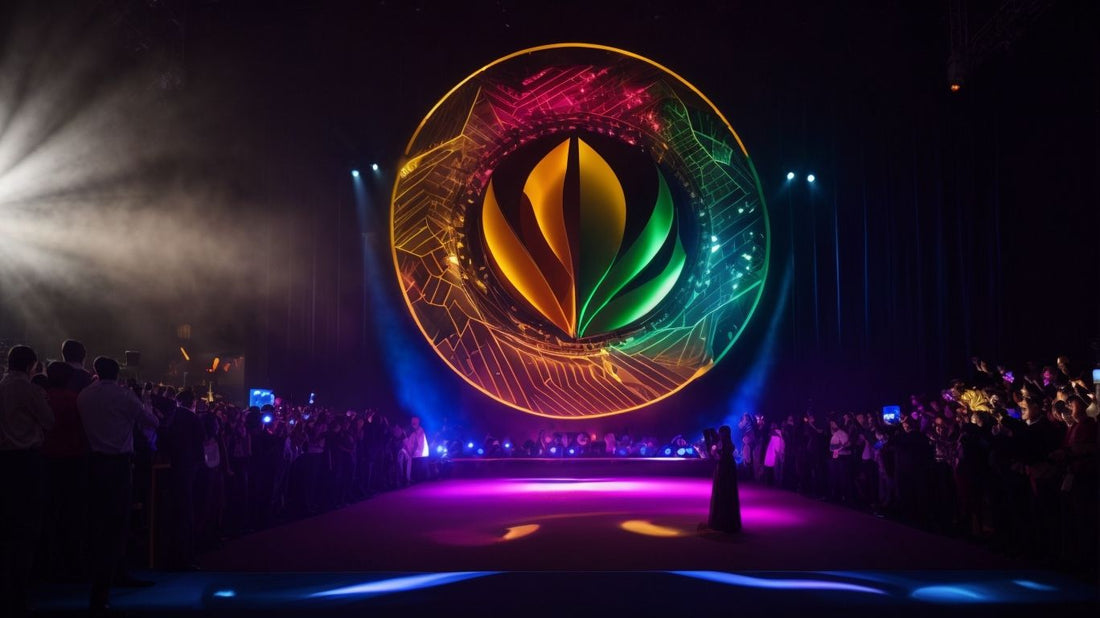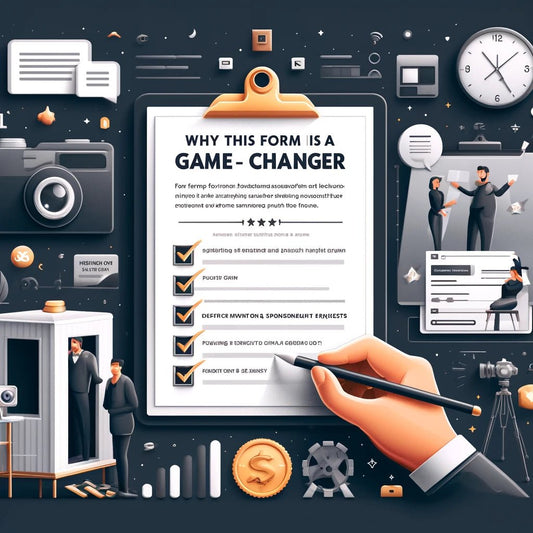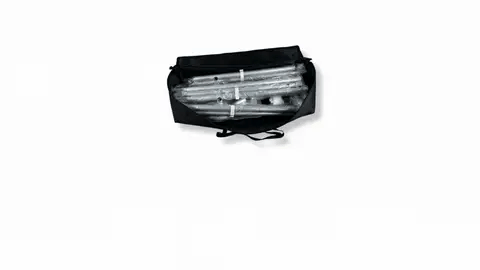
The Power of Corporate Event Branding: Maximizing Impact and Engagement
Share
.jpg)
"Corporate event branding plays a crucial role in shaping the identity and perception of a company. It involves leveraging branding strategies and techniques to create a unique and memorable experience for attendees. By aligning the event with the company's brand values and effectively integrating branding elements, corporate events can effectively enhance brand identity, create a lasting impression, and influence audience perception.
The elements of corporate event branding encompass various aspects, including the logo and visual identity, theme and decor, marketing collateral and giveaways, as well as speaker selection and presentation style. Each of these components contributes to building a cohesive brand experience that resonates with the target audience.
To create a successful corporate event branding, it is essential to define clear objectives and identify the target audience. This allows for tailored branding strategies and ensures that the event aligns with the company's goals. It is also crucial to develop a consistent brand story that communicates the company's values and message effectively.
Designing engaging visuals and branding materials is another important step in corporate event branding. These visuals should be eye-catching and reflect the brand's identity, helping to create a distinct and cohesive visual identity throughout the event. Strategic brand integrations, such as incorporating the brand into various event elements, further reinforce the brand presence.
To make corporate event branding effective, it is important to align the brand values with the event's purpose. Creating unique and memorable experiences for attendees also helps in leaving a lasting impression. Leveraging social media platforms and engaging attendees actively through online channels can extend the reach of the event and enhance brand engagement. Lastly, evaluating and measuring the impact of the brand on the event allows for continuous improvement and identifies areas of success.
"What is Corporate Event Branding?
Corporate event branding refers to the process of creating a unique identity and image for a corporate event. It involves developing a consistent theme, message, and visual elements that reflect the company's values and objectives. This branding extends to all aspects of the event, including invitations, decorations, signage, and promotional materials. Corporate event branding helps create a memorable and cohesive experience for attendees and reinforces the company's brand identity. Suggestions for effective corporate event branding include conducting thorough research, understanding the target audience, and working with professionals who specialize in event planning and brand management. What is Corporate Event Branding?
Importance of Corporate Event Branding
Corporate events have become a powerful platform for companies to showcase their brand identity, create memorable experiences, and influence audience perception. In this section, we delve into the importance of corporate event branding, exploring how it can help in building brand identity, creating engaging experiences, and shaping how the audience perceives a company. Get ready to discover the impact and potential of effective corporate event branding strategies that elevate businesses to new heights.Building Brand Identity
Building brand identity is a fundamental aspect of corporate event branding. It involves strategically creating a consistent and recognizable image that authentically represents the values and personality of the brand. This can be accomplished through various elements including the logo and visual identity, theme and decor, marketing collateral, and speaker selection. By thoughtfully incorporating these elements, companies can cultivate a robust brand identity that deeply resonates with attendees and significantly influences their perception of the brand. It is imperative for businesses to clearly define their objectives and target audience, craft a consistent brand narrative, design captivating visuals and materials, and strategically plan brand integrations to effectively build their brand identity through corporate events.
Creating a Memorable Experience
Creating a memorable experience is essential in corporate event branding. To achieve this, you should consider incorporating the following elements:
- Interactive activities: Engage attendees through interactive activities such as workshops, live demos, or team-building exercises.
- Unique venues: Choose a venue that stands out and adds a touch of novelty to the event, leaving a lasting impression on attendees.
- Personalization: Customize the event experience by offering personalized touches like name tags, welcome gifts, or tailored agendas.
- Entertainment: Include captivating entertainment options like live music performances, interactive games, or surprise acts to keep attendees entertained and engaged.
Pro-tip: Designing an event experience that combines interaction, personalization, and entertainment will create a memorable experience for attendees and make your event truly unforgettable.
Influencing Audience Perception
Incorporating methods to influence audience perception is a vital component of corporate event branding. By skillfully curating the logo and visual identity, theme and decor, marketing collateral and giveaways, and speaker selection and presentation style, event organizers can intentionally shape how attendees perceive the event and the associated brand. Aligning the brand's values with the event's purpose and creating distinctive and unforgettable experiences can further exert influence on audience perception. Additionally, leveraging social media and actively involving attendees throughout the event can also augment the overall perception. Conducting evaluations and measuring the impact of the brand enables organizers to gain insights into the effectiveness of their branding endeavors.
Elements of Corporate Event Branding
Discover the key ingredients for successful corporate event branding in this exciting section! Learn how to make your corporate event stand out with elements such as logo and visual identity, captivating themes and decor, eye-catching marketing collateral and giveaways, and selecting the perfect speakers and presentation style. Unleash your creativity and leave a lasting impression on attendees with these essential components. Get ready to elevate your corporate events to new heights!Logo and Visual Identity
When it comes to corporate event branding, the Logo and Visual Identity play a crucial role in creating a strong brand presence. Here are some key elements to consider in developing the Logo and Visual Identity:
- Logo design: The Logo should be unique, visually appealing, and aligned with the company's overall brand image.
- Color scheme: Choose colors that reflect the brand's personality and evoke the desired emotions.
- Typography: Select fonts that are legible and in line with the brand's tone and personality.
- Graphics and imagery: Use relevant graphics and imagery that align with the brand's values and messaging.
- Consistency: Ensure that the Logo and Visual elements are consistently applied across all event materials and platforms.
By carefully crafting the Logo and Visual Identity, companies can create a cohesive brand identity that resonates with attendees and leaves a lasting impression.
Theme and Decor
When it comes to corporate event branding, an important aspect to consider is the theme and decor. Here are some key elements to focus on when planning the theme and decor for your event:
- Consistency: Ensure that the theme and decor align with your brand identity and messaging.
- Visual Appeal: Use visually appealing elements such as colors, lighting, and props to create an immersive experience for attendees.
- Relevance: Select a theme and decor that is relevant to the purpose and objectives of the event, as well as the target audience.
- Detail-oriented: Pay attention to even the smallest details, such as table settings, centerpieces, and signage to create a cohesive and polished look.
- Personalization: Incorporate elements that reflect the unique personality and values of your brand, making the event memorable and distinct.
By focusing on these elements, you can create a visually stunning and memorable event that effectively reinforces your brand identity and leaves a lasting impression on attendees.
- When it comes to corporate event branding, an important aspect to consider is the theme and decor. Here are some key elements to focus on when planning the theme and decor for your event:
- Consistency: Ensure that the theme and decor align with your brand identity and messaging.
- Visual Appeal: Use visually appealing elements such as colors, lighting, and props to create an immersive experience for attendees.
- Relevance: Select a theme and decor that is relevant to the purpose and objectives of the event, as well as the target audience.
- Detail-oriented: Pay attention to even the smallest details, such as table settings, centerpieces, and signage to create a cohesive and polished look.
- Personalization: Incorporate elements that reflect the unique personality and values of your brand, making the event memorable and distinct.
By focusing on these elements, you can create a visually stunning and memorable event that effectively reinforces your brand identity and leaves a lasting impression on attendees.
Marketing Collateral and Giveaways
Marketing collateral and giveaways are essential elements of corporate event branding. They play a crucial role in promoting brand awareness, fostering engagement, and leaving a lasting impression on attendees.
| Marketing Collateral | Giveaways |
| Brochures, flyers, and catalogs | Branded merchandise such as t-shirts, pens, and water bottles |
| Event programs and agendas | Customized promotional items like USB drives or keychains |
| Branded signage and banners | Gift bags or swag bags filled with branded goodies |
These marketing collateral pieces provide information about the event, speakers, and sponsors, while giveaways serve as a tangible reminder of the brand. By incorporating the company's logo and visual identity into these materials, it helps reinforce brand recognition and reinforces the event's overall branding strategy.
Speaker Selection and Presentation Style
Selecting the right speakers and determining the presentation style are two essential elements of successful corporate event branding. When it comes to Speaker Selection, it is crucial to choose speakers who align with your event's objectives and target audience. Take into consideration their expertise and credibility in the industry. Don't forget to research their previous speaking engagements and audience feedback.
Moving on to Presentation Style, it is important to decide on the desired tone and format of the presentations. Consider whether you want individual speakers, panel discussions, or interactive sessions. Emphasize the use of visual aids, technology, and storytelling techniques to engage the audience.
Another aspect to focus on is Personal Branding. Make sure that the speakers' personal brand aligns with your event's brand values. Request the speakers to incorporate your event branding in their presentations and encourage them to promote the event on their social media platforms.
Collaboration is key in this process. Foster open communication and collaboration with the speakers. Provide them with event details, expectations, and any necessary resources. Encourage them to tailor their presentations to the specific audience and event theme.
By carefully selecting speakers and defining the presentation style, your corporate event can create a lasting impact on attendees, reinforce your brand message, and drive engagement.
Steps to Create a Successful Corporate Event Branding
When it comes to corporate event branding, creating a successful and impactful brand identity is key. In this section, we'll dive into the essential steps that can help you achieve just that. From defining clear objectives and identifying your target audience to crafting a consistent brand story, designing captivating visuals and branding materials, and strategically integrating your brand throughout the event, we'll uncover the secrets behind creating a corporate event branding that truly stands out. So, let's get started on your journey towards a memorable and effective brand experience.Define Objectives and Target Audience
Defining Objectives and Target Audience for a Successful Corporate Event BrandingClearly identifying the purpose of your corporate event and defining your objectives and target audience are crucial steps towards creating an impactful brand image. Whether you are launching a new product, strengthening client relationships, or promoting company values, it is essential to have a clear direction.
To start, clearly define your objectives for the event and determine what you hope to achieve. For instance, if you are a technology company, your objective might be to showcase your latest innovation and increase brand awareness.
Next, delve into understanding your target audience. Study their demographics, interests, and preferences to tailor the event experience specifically to their needs. For example, if your target audience consists mainly of millennials, incorporate interactive technology and trendy themes to engage them.
A great real-life example of successful event planning comes from a technology company. They defined their objective of showcasing their latest innovation and targeted tech enthusiasts. Through interactive demos and workshops, they effectively increased brand awareness and customer engagement.
Create a Consistent Brand Story
Creating a consistent brand story is imperative for effective corporate event branding. By establishing a unified narrative, companies can strengthen their brand identity and connect with their audience on a deeper level. Here are the essential steps to create a consistent brand story:
Pro-tip: Continuously reinforce your brand story before, during, and after the event to maintain a strong and consistent brand presence in the minds of attendees.
Design Engaging Visuals and Branding Materials
Designing engaging visuals and branding materials is essential for corporate event branding. It plays a vital role in creating a cohesive and memorable brand experience for attendees. To achieve this, there are several key elements to consider:
- Logo and Visual Identity: It is crucial to develop a visually appealing logo that accurately represents your brand. Additionally, consistency in visual elements across all materials is essential.
- Theme and Decor: When designing visuals and branding materials, choose a theme that aligns with your brand. Incorporate this theme into the event decor and signage to create a cohesive atmosphere.
- Marketing Collateral and Giveaways: Professional and eye-catching materials such as brochures, banners, and promotional items are essential for reinforcing your brand message. Create these materials with utmost care.
- Speaker Selection and Presentation Style: Ensure that the speakers you choose align with your brand values. Additionally, encourage them to use engaging visual aids during their presentations to enhance the audience's experience.
By effectively designing these elements, you can significantly enhance brand recognition and leave a lasting impression on event attendees.
Plan Strategic Brand Integrations
To effectively plan strategic brand integrations for your corporate event, follow these steps:
- Begin by identifying key partners and sponsors that align with your brand values and event objectives.
- Incorporate branded elements into the event, including signage, banners, and branded merchandise, to create a cohesive brand experience.
- Create unique brand activations and interactive experiences that offer attendees the opportunity to directly engage with your brand, fostering a memorable connection.
- Collaborate with speakers or presenters to seamlessly integrate your brand messaging into their presentations, maximizing exposure and recognition.
- Make use of digital platforms and social media to extend your brand reach before, during, and after the event, increasing overall brand visibility and engagement.
Pro Tip: Always remember to prioritize the attendee experience when planning brand integrations. Strive for a seamless incorporation of your brand that enhances rather than distracts from the event's main objectives.
Tips for Effective Corporate Event Branding
Get ready to take your corporate events to the next level with these effective branding tips. We'll dive into how aligning brand values with event purpose can create a powerful impact. Discover how to create unique and memorable experiences that leave a lasting impression on attendees. Find out how integrating social media and engaging participants can boost brand visibility. Learn how to evaluate and measure the impact of your brand during and after the event. Let's make your corporate event branding a success!Align Brand Values with Event Purpose
To align brand values with event purpose, follow these steps:
- Clearly define the values and purpose of your brand and the event to ensure alignment.
- Identify the key message you wish to convey to attendees that reflects your brand values.
- Create event activities and experiences that align with and reinforce your brand values.
- Select speakers and presenters who not only embody your brand values but can also effectively communicate them.
- Develop branded materials and visuals that are consistent with your brand's style and messaging.
- Incorporate interactive elements and engagement strategies that enable attendees to firsthand experience your brand values.
- After the event, evaluate the impact of your brand alignment efforts to measure success and identify areas for improvement.
Create Unique and Memorable Experiences
Creating unique and memorable experiences is a key aspect of successful corporate event branding. This can be achieved through the following strategies:
- Personalization: Tailor the event to the preferences and interests of the attendees, providing customized experiences that make them feel valued and special.
- Interactive Elements: Incorporate interactive activities, such as workshops, games, or live performances, that engage attendees and leave a lasting impression.
- Innovative Technology: Utilize cutting-edge technology, such as virtual reality or augmented reality, to enhance the event experience and create a sense of novelty.
- Sensory Stimulation: Utilize sensory elements like lighting, music, and scents to create a multisensory experience that captivates attendees' senses and evokes strong emotions.
- Surprise and Delight: Introduce unexpected elements throughout the event, such as surprise guest appearances or unique food and beverage offerings, to create a sense of excitement and delight.
One inspiring example of creating unique and memorable experiences is the Macy's Thanksgiving Day Parade. Since its inception in 1924, this iconic event has captured the hearts of millions with its giant character balloons, elaborate floats, and captivating performances. With each passing year, Macy's continues to innovate and surprise spectators, making the parade an unforgettable experience for families around the world.
Integrate Social Media and Engage Attendees
Integrating social media into corporate events is crucial for engaging attendees and enhancing brand visibility. By integrating social media, corporate events can effectively engage attendees and improve brand visibility. Here are some effective ways to achieve this:
Historically, integrating social media at events has revolutionized audience engagement, facilitating real-time interaction, and creating a sense of community among attendees. This approach has proven to increase event reach, generate valuable user-generated content, and foster meaningful connections among participants.
Evaluate and Measure Brand Impact
Evaluating and measuring the impact of corporate events on the brand is essential to assess the success of branding efforts. When assessing and measuring the impact of the brand, there are several key elements to consider:
- Establishing clear objectives and metrics: It is important to define specific goals and metrics that are aligned with the brand objectives. This may include increasing brand awareness, enhancing customer engagement, or achieving sales growth.
- Collecting data and feedback: Gathering data through surveys, analyzing social media insights, obtaining attendee feedback, and conducting post-event evaluations can provide valuable insights into brand perception and audience satisfaction.
- Analyzing brand reach and visibility: Evaluating the extent and visibility of the brand before, during, and after the event can be done by assessing website traffic, monitoring social media mentions, analyzing media coverage, and tracking brand mentions.
- Measuring brand sentiment: Monitoring social media sentiment and feedback can help determine how attendees perceive and communicate about the brand during and following the event.
- Evaluating return on investment (ROI): Calculating the ROI involves comparing the costs of the event with the business outcomes, such as leads generated, client acquisition, or revenue generated from the event.
Frequently Asked Questions
What is corporate event branding?
Corporate event branding is the process of creating a unique identity and experience for a corporate event. It involves elements such as the event name, logo, colors, and graphics, which contribute to the overall brand of the event and reflect the company's brand.
Why is corporate event branding important?
Corporate event branding is important because it establishes the company as a leader in the industry and creates a memorable experience for attendees. It helps build product and brand awareness, engage employees, improve company culture, find new customers, and speak directly to the target audience.
What are some key elements of corporate event branding?
Some key elements of corporate event branding include the event name, logo, colors, and graphics. Additionally, incorporating the corporate event brand into the event's décor, food and drink choices, printed materials, and overall theme are important aspects of corporate event design and branding.
What are the different types of corporate events?
There are different types of corporate events, including appreciation events, seminars, conferences, workshops, trade shows, product launches, and charity events. Each type serves a different purpose, such as strengthening connections, demonstrating industry expertise, showcasing products, generating excitement, and promoting corporate social responsibility.
How can corporate event branding be used to promote a unique product?
Corporate event branding can be used to promote a unique product by incorporating elements such as branded entertainment, unique catering, wow-worthy décor, and refreshing sips. These creative ideas can turn the logo of the company into an experience, helping to differentiate the product from competitors and attract attention from attendees.
What are some tips for successful corporate event branding?
Some tips for successful corporate event branding include securing a venue that aligns with the event's theme, printing flyers and other promotional materials that reflect the corporate event brand, inviting guest speakers that support the event's goals, and organizing catering that complements the overall brand experience. Additionally, incorporating bold color palettes, outdoor activities, and experiential activations can make the event more enjoyable and memorable for attendees.






